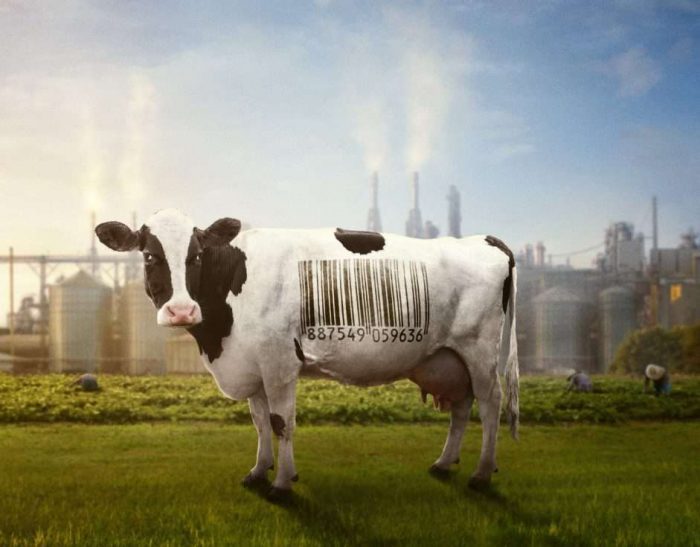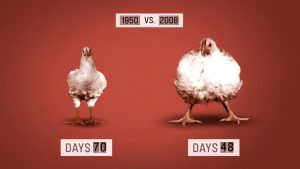Reviewed by Jeffrey Sanzel
The A Quiet Place franchise premiered in 2018. The well-received film followed parents (Emily Blunt and John Krasinski) attempting to protect their children in a post-apocalyptic world invaded by blind monsters with an acute sense of hearing. Krasinski directed and co-wrote the screenplay with Bryan Woods and Scott Beck.
The equally lauded A Quiet Place Part II (2020) gave slightly additional background of the invasion and continued the first film’s timeline, with Krasinski appearing, directing, and penning the screenplay solo. The series will (perhaps?) culminate with the Krasinski-helmed A Quiet Place Part III (scheduled for release in 2025).
In the meantime, the clock has been rolled back for the prequel A Quiet Place: Day One.
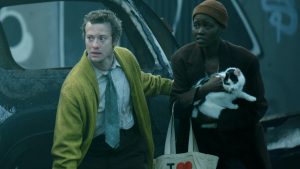
For A Quiet Place: Day One, Krasinski turned the reigns over to Michael Sarnoski (Pig), who directs his screenplay based on a story created in collaboration with Krasinski. The film opens at the Little Firs Hospice Center, where Reuben (Alex Wolff), a nurse, negotiates with Sam (Lupita Nyong’o), a terminally ill cancer patient connected only to her cat, Frodo, to go on a New York City outing.
Reluctantly, she agrees, with the proviso that they have pizza afterward. Much to Sam’s annoyance, the field trip is a marionette show. Immediately following the performance, meteor-like objects fall from the sky, unleashing extraterrestrials that attack, murder, and destroy. Within minutes, the City is post-apocalyptic, with burning cars and hollowed-out buildings.
Sam takes shelter in the marionette theatre, along with a handful of survivors. The government bombs the bridges surrounding Manhattan to keep the aliens, who cannot swim, on the island. Since the beings are blind, they track their prey by sound. Silence becomes the sole means of survival.
Announcements via helicopter instruct the remaining citizens to head for the South Street Seaport. A chillingly silent trek of refugees travel downtown. However, as the evacuee number increases, the sound turns the march into a bloodbath.
Soon, Sam meets Eric (Joseph Quinn), a law student from Kent, England. Though hesitant, Sam allows Eric to join her and Frodo as she works her way north to her Harlem home. A series of scenes follow in which the monsters almost catch them. The film relies almost exclusively on the tension built as they navigate any possible action that could create noise.
The plot is simple, and the result is a hybrid of traditional science fiction/creature feature with its requisite jump-out scares and action thriller, containing numerous explosions. The film calls to mind elements of I Am Legend and any number of alien and zombie movies.
Over the three entries, the filmmakers teased bits and pieces of the aliens’ background, but they remain mostly a mystery. (Krasinski has revealed more in interviews about the “Death Angels” than is covered in the films.)
The creature designers used various elements of prehistoric fish, black snakes, and bats to create the monsters. They also referenced “bog people”—cadavers mummified in peat, turning the skin black to create a sagging, leathery look. Somehow, they are more effective in close-up, with their moist gaping maws of sharp teeth, than in the CGI-swarming over buildings and streets.
Two aspects raise A Quiet Place: Day One above the predictable. The first is the extremely taut sound design. Whether it is the overwhelming chaos of New York City or a balloon that pops with the crack of gunshot, the sound—and its absence—is the driving design element. The opening of a tin can, feet on gravel, or the dragging of a suitcase result in well-crafted moments of dread. The filmmakers made a less effective choice with a musical soundtrack that is more intrusive than supportive.
The second piece is the chemistry between the two leads. The film is basically a two-hander, with a handful of moments given to a few briefly seen characters. (As Henri, from A Quiet Place Part II, Djimon Hounsou has a particularly powerful and brutal interaction with shades of the Warsaw Ghetto.)
Nyong’o first came to prominence with her brilliant, raw performance in 12 Years a Slave (2013). Again, she shows she is an actor of rich, resonant truth, who makes every situation visceral and real. Her Sam roils with fear, pain, frustration, and resolve. Glimpses of wry humor peek through her emotional wall. She is the rare actor who conveys a sense of the character’s thoughts, even in the stillest moments.
Quinn makes an excellent partner, a beta searching for guidance, but with a kindness that plays underneath the terror. A highlight is the moment in which they share primal screams masked by thunder. (Special mention must be made of Nico and Schnitzel, the two cats who share the role of Frodo. Somehow, they convey an honest sense of caring.)
While A Quiet Place: Day One offers nothing new, the result is a mildly entertaining ninety minutes showcasing two strong performances in a world of heightened silence—where even a single breath or the slightest inhale means life and death.
Rated PG-13, the film is now playing in local theaters.

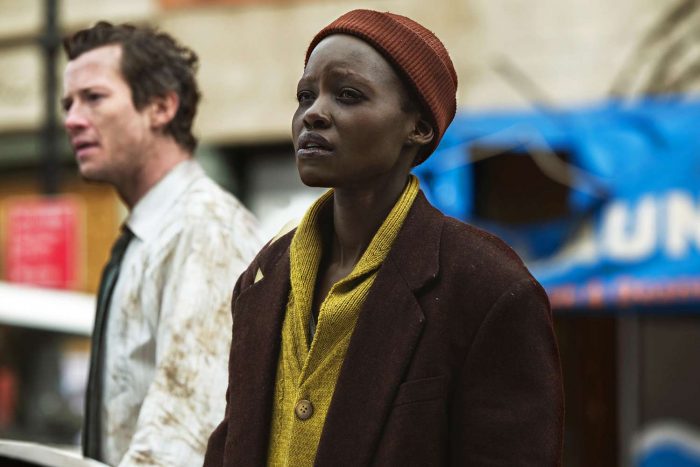

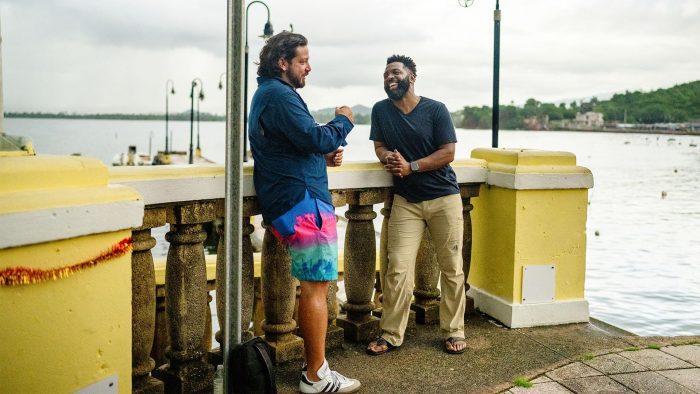



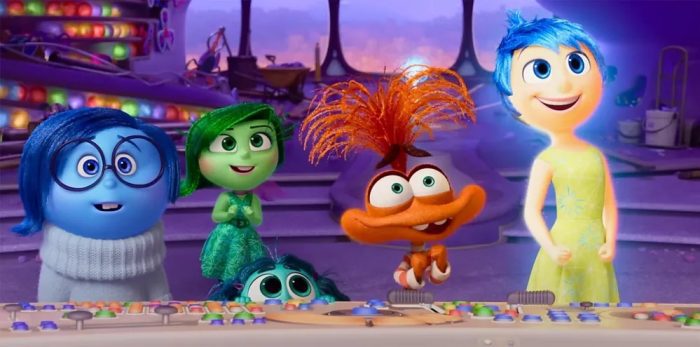




 Rachel and Joon have been best friends since kindergarten, when they bonded over a pirate fantasy. Now, eleven years old, in July, between fifth and sixth grade, they have decided to be spies. Additionally, the inseparable pair are facing Joon’s imminent move out of the district, both fearing the toll the distance will take on their friendship.
Rachel and Joon have been best friends since kindergarten, when they bonded over a pirate fantasy. Now, eleven years old, in July, between fifth and sixth grade, they have decided to be spies. Additionally, the inseparable pair are facing Joon’s imminent move out of the district, both fearing the toll the distance will take on their friendship.



